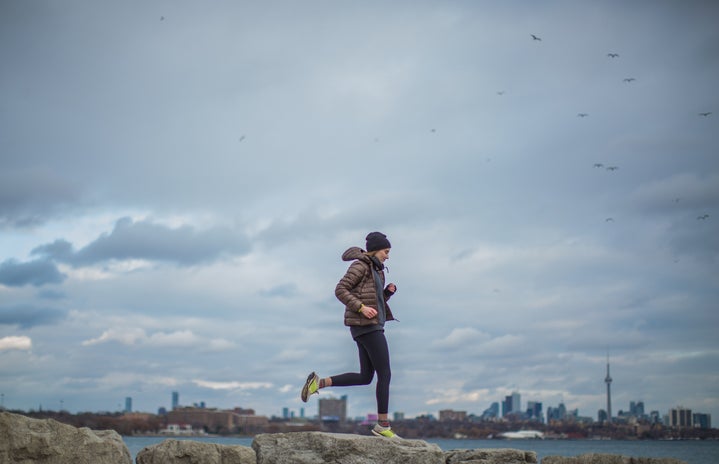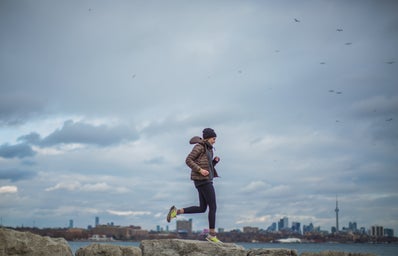Most people think that doing yoga requires a studio and an instructor guiding you – but it is a lot simpler than that! After speaking with one of the yoga instructors here at AU, Eva Blutinger, we learned that it is extremely easy to do yoga anywhere, even from your dorm or apartment. Here are some tips on how to practice yoga from home:
The Set Up
-
Set aside time when you can relax and not be disturbed, void of distractions and electronics.
-
Place your mat in a clear space and create a practice that’s safe, effective, and empowering.
-
Choose a time to practice – early morning on an empty stomach is best, but any time of day is fine. Consistency is more important than duration.
-
Begin with small steps, even just a few minutes of controlled breathing provides profound benefits.
Getting Started
-
Center yourself – Sit on a cushion or block, close your eyes, scan your body and relax major tension holders (forehead, jaw, shoulders, belly, hands and feet.)
-
Set an intention
-
Breathe – take deep abdominal breaths to ground your attention in present moment.
-
Warm ups include all 6 Movements of the Spine. These are slow repetitive movements coordinated with breath and movement.
Asanas – Yoga Postures
There are many postures and some basic principles for sequencing but they are not etched in stone. It’s more important to follow your natural cues and focus on what your particular needs are that day.
Standing Postures – work the calves, quads and hips and are best done early since they work the upper legs, the largest muscles in the body which require strength and stamina.
Balancing Postures – best done toward the end of the standing sequence when you feel grounded and stable. To increase strength practice on the weaker side first and last, and on the stronger side just once.
Abdominal Strengtheners – best practiced after warming up and stretching the legs and front groins or can be interwoven throughout the practice.
Backbends – done at the high point of your practice – your shoulders, low back, quads, adductors and pelvic floor must be sufficiently lengthened and warmed-up in order to do backbends safely.
Twists – work spine, shoulders and abdominals and are considered neutralizing postures which calm your body if agitated and stimulate it, if lethargic and dull. Done after backbends they are cooling and soothing.
Inversions – such as ‘legs up the wall’ are a great way to end your practice to soothe and calm your Nervous System and with slow, breathing, you will tap into your “rest and digest” nervous response.
Here are some benefits to practicing yoga that Eva shared with us:
-
You will learn breathing techniques that will help you perform better in exams, improve focus and mental clarity and help you sleep better
-
Keeps you grounded and supports a positive state of mind
-
Enhances your physical appearance by toning muscles and oxygenating the body which results in clearer and brighter skin
-
Make friends with ‘like-minded people’ and leave your worries behind
-
Yoga works – a healthy body supports a productive mind – if you want to thrive in college – must take time for your well-being, all you have to do is show up and practice and it will change your life.
If you’re intereste in learning more about Eva’s classes, check out our full review of her class. Enjoy your practice and Namaste!



